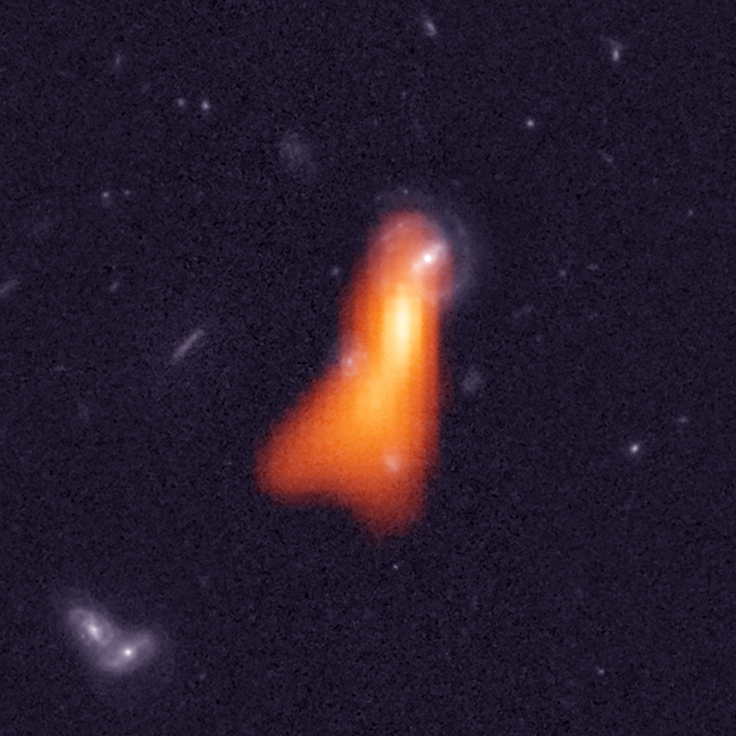Daily Image
03-06-2016New Distance Record Promises Important Tool for Studying Galaxies
| Submitter: | Tom Oosterloo (for CHILES) |
| Description: | Astronomers (including Maddox & Oosterloo from Astron and Hess, Lucero & Verheijen from the Kapteyn Institute) have detected the faint radio emission from atomic hydrogen, the most abundant element in the Universe, in a galaxy nearly 5 billion (5 thousand million) light-years from Earth. This doubles the distance record for this type of detection. The discovery comes from the first 178 hours of VLA observations of a program called the 'COSMOS HI Large Extragalactic Survey', or CHILES, led by Jacqueline van Gorkom of Columbia University. The CHILES project eventually will use more than 1000 hours of VLA observing time. The evolution of galaxies is largely determined by the balance between how much a galaxy grows by capturing gas from the inter-galactic environment, and how much mass it loses due to interactions with other galaxies, or due to furious bursts of star formation. By looking farther out in distance, one is looking farther back in time, so observations of very distant galaxies give insights into how in the past galaxies drew in gas, processed it, and lost it again. Ultimately, the CHILES project will look 6 billion years back in time, thus covering almost half the lifespan of the Universe. The data give a first glimpse of galaxy evolution in action, 5 billion years ago: the hydrogen gas (orange in the image above) belongs to a massive, barred spiral galaxy which may be interacting with a small neighbour galaxy. Due to this interaction, it is losing a lot of gas. Nevertheless, there must still be a lot of gas left (nearly 100 billion times the mass of the Sun) because the galaxy is forming stars at a rate of about 85 suns every year (i.e. about 30 times more than our own Galaxy does). The results of this work are published in the Astrophysical Journal Letters ( http://xxx.lanl.gov/abs/1606.00013 ) |
| Copyright: | NRAO/ICRAR |
| Tweet |  |
